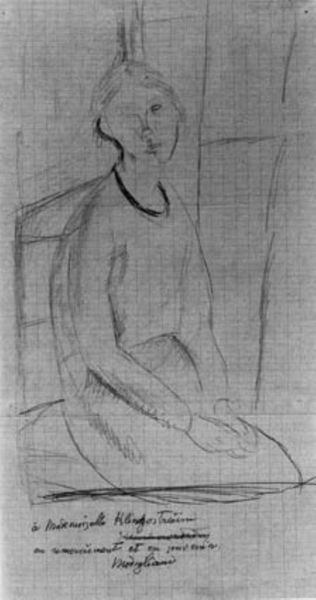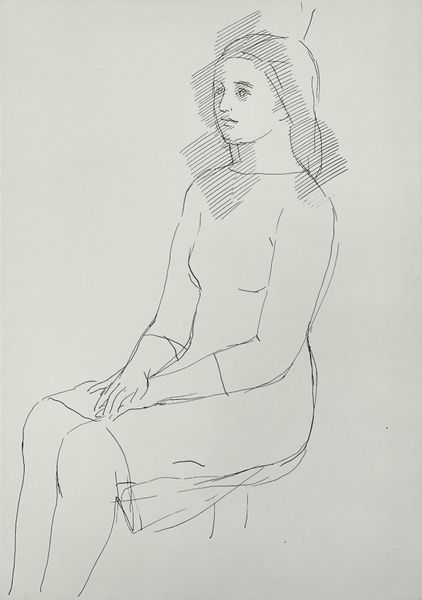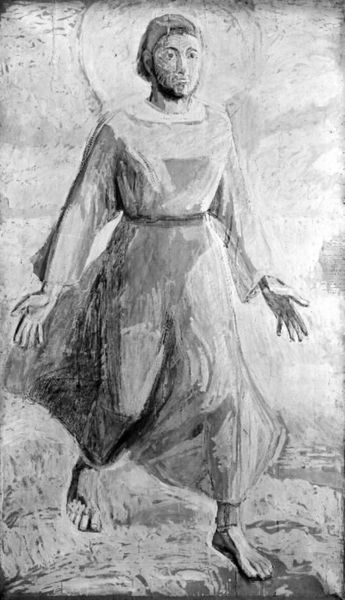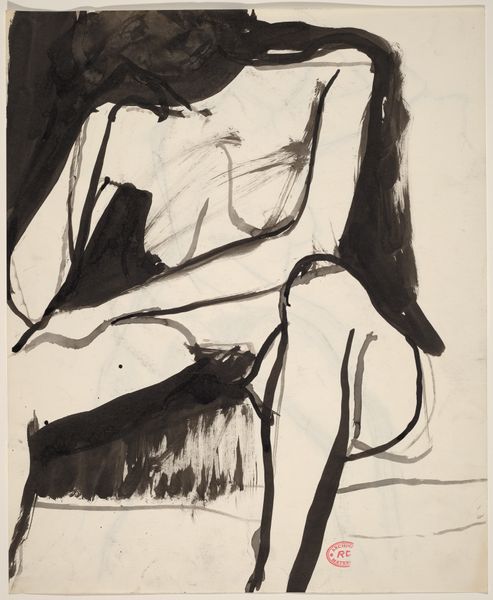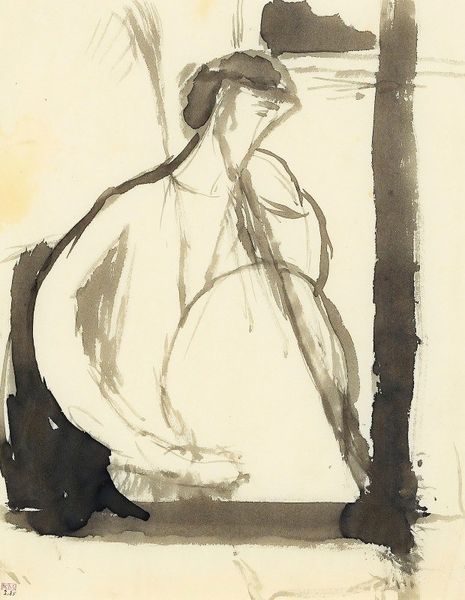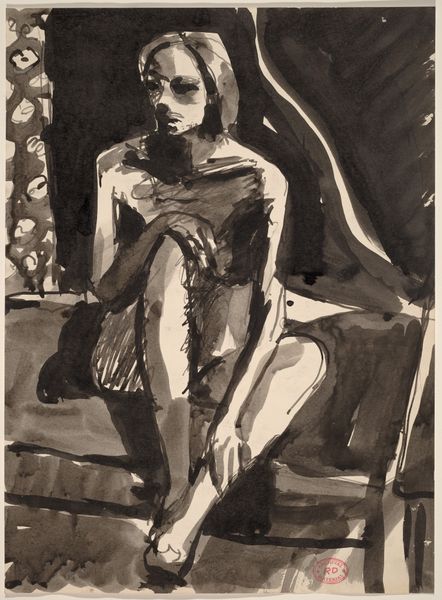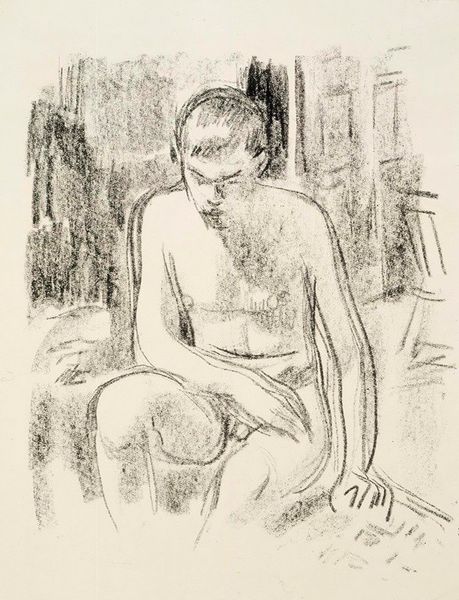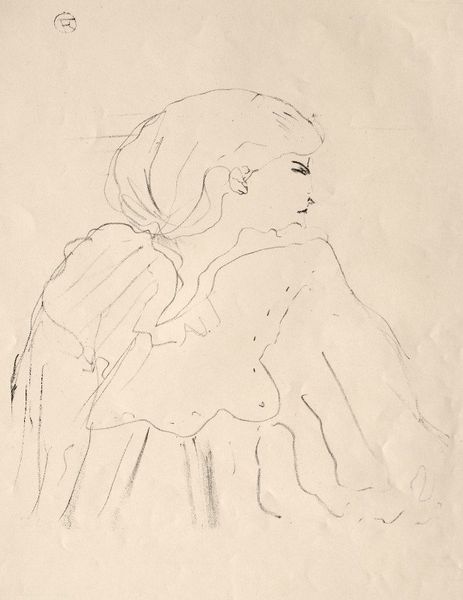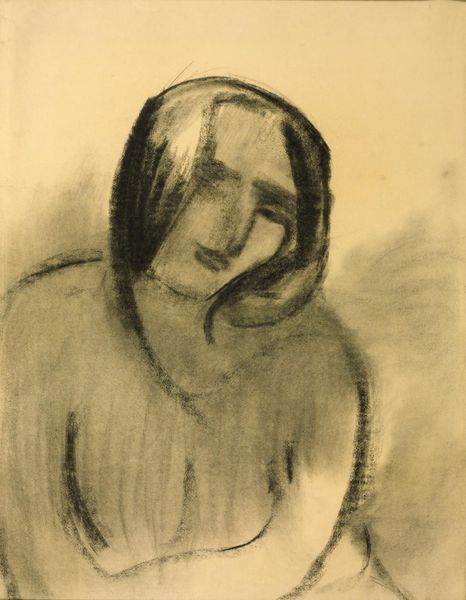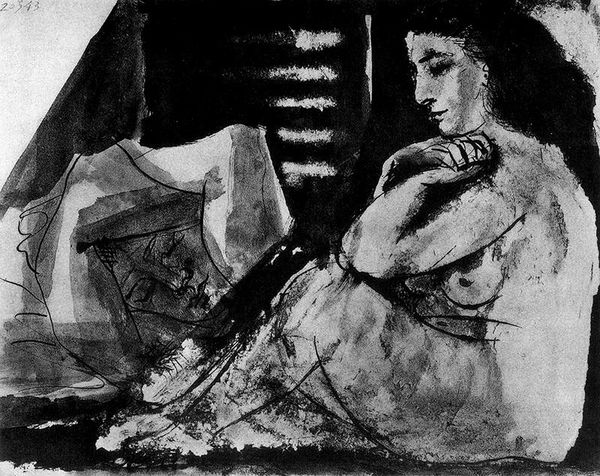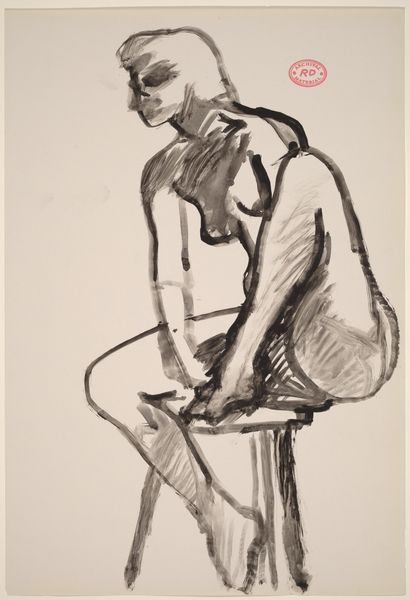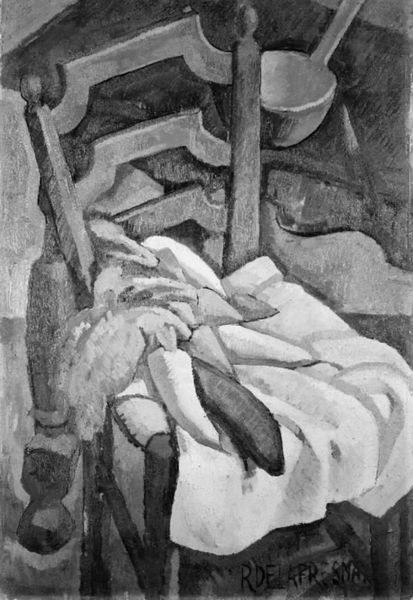
painting, oil-paint
#
portrait
#
painting
#
oil-paint
#
figuration
#
realism
Dimensions: 132 cm (height) x 97 cm (width) (Netto)
Curator: Here we have Axel Bentzen’s “The Painter Martha Christiansen," rendered in oil paint somewhere between 1945 and 1946. What do you make of it at first glance? Editor: It projects a stark yet subdued sensibility. The grayscale palette focuses attention squarely on the interplay of forms and planes; the light, though diffused, is almost brutal in its frankness. Curator: The choice of grayscale does streamline visual processing. Note how Bentzen emphasizes the geometrical relationship between Martha's posture and the furniture, each echoed and contrasted in tonality. Editor: Right, the structural elements feel like an attempt to reduce forms to essentials. But that austere approach, common perhaps in a postwar context, could speak to larger themes of national reconstruction and simplification. It evokes the challenges in a damaged world. Curator: Precisely, and consider also the framing of the artist within her own interior space, this speaks about limitations, too. Bentzen highlights her engagement with these boundaries using light and shadow to amplify mood. Editor: Yes, her direct gaze adds depth. There's a deliberate challenge to the viewer, confronting them with her artistic identity and the world it inhabits. Was this portrait displayed widely? Were people of the time interested in her? Curator: The reception for "The Painter Martha Christiansen" evolved. Early critique centered more on the geometrical stylization, which then related with broader interest in postwar art practices, like deconstruction of imagery. The socio-political interpretations only rose as historical awareness deepened. Editor: The brushwork has purpose here as well; broad strokes give form but suppress finer details that add intensity, wouldn’t you agree? The chair in its rigid angles holds a mirror to its inhabitant's intensity. Curator: True, this restraint reinforces emotional intensity; there's something intrinsically forceful even as subtlety plays out; an emotional complexity crafted through geometric shape relationships and gradations across shades. Editor: I will ponder that longer, its initial quietness opens many doors when entering dialogues connecting person, history, and artistic ambition. Curator: It encapsulates an artistic struggle interpreted through planes and shades in a pivotal era—a quiet rebellion.
Comments
No comments
Be the first to comment and join the conversation on the ultimate creative platform.
